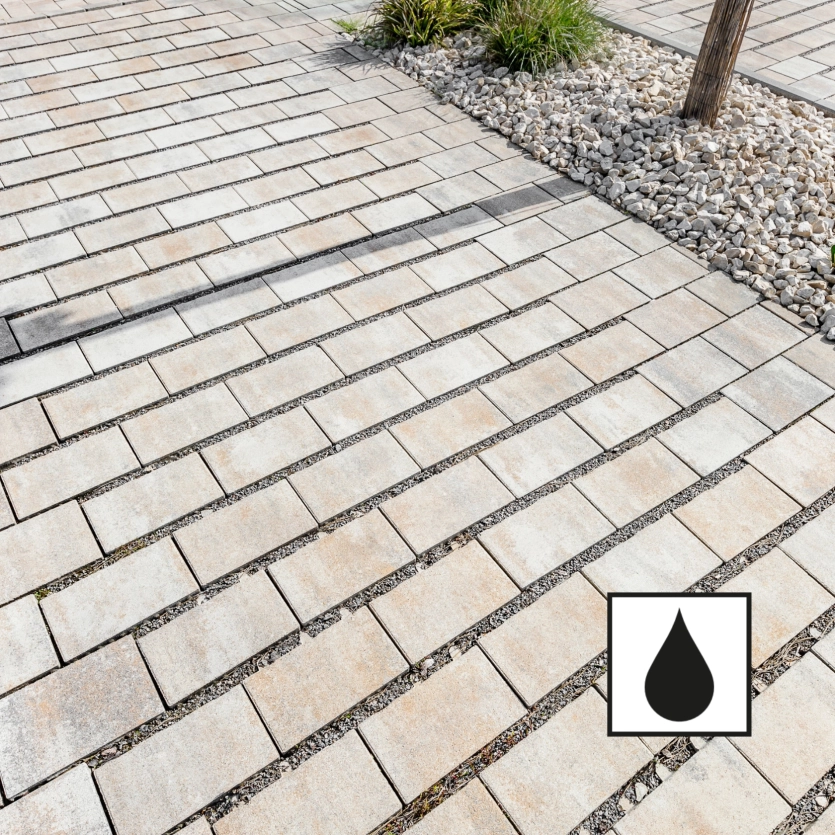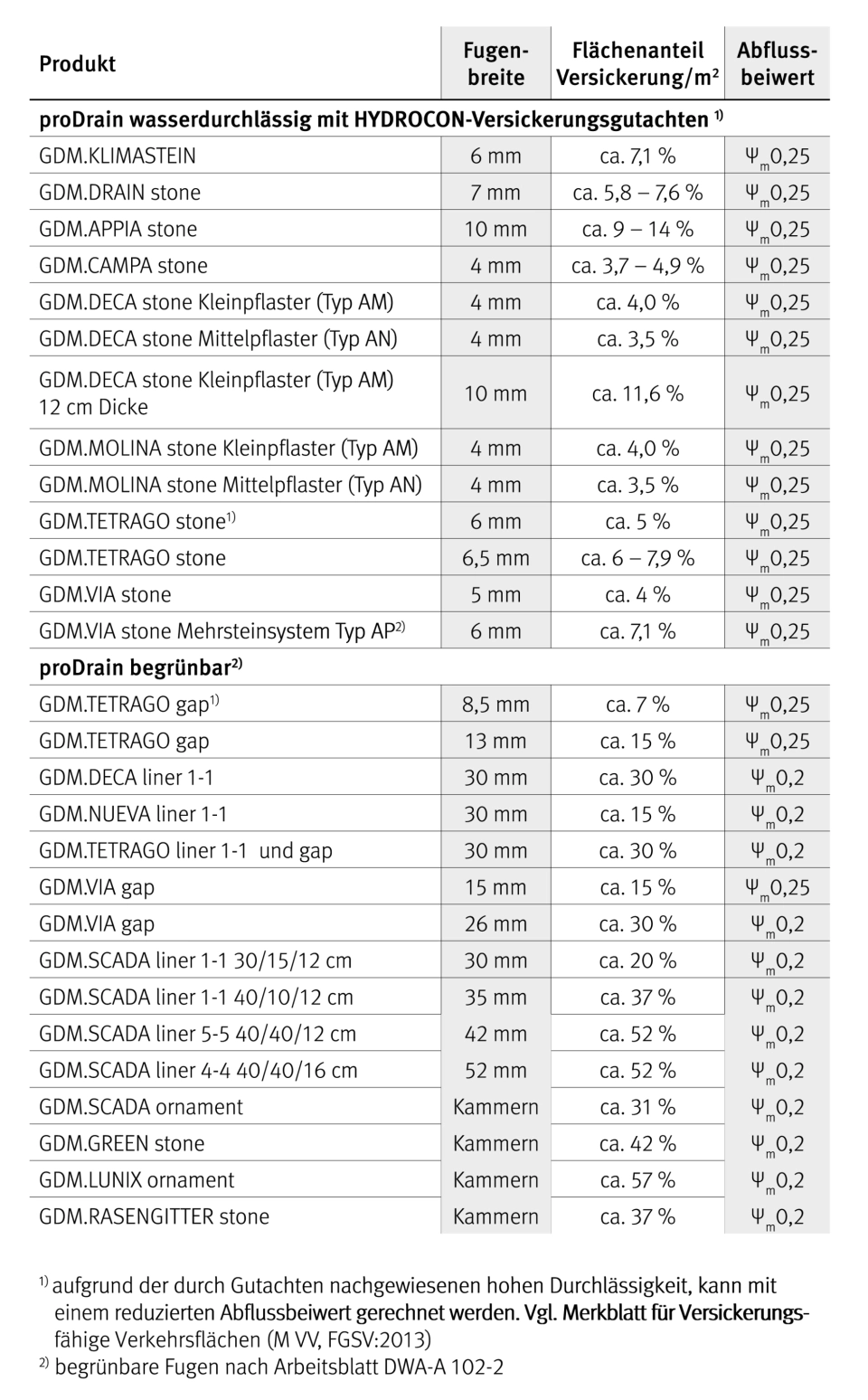


Ecological paving stones from GODELMANN are the perfect choice for anyone who values sustainable and environmentally friendly solutions. These pavers are particularly permeable and water-permeable, promoting the natural infiltration of water and helping to recharge our groundwater instead of letting the water disappear into the sewage system.
Our symbols with the water droplet indicate the infiltration properties of the paving stones. In addition, our pavers offer a variety of other proactive properties.

Our ecological paving is always water-permeable, which means that rainwater can seep through the paving surface into the ground instead of draining directly into the sewer system. This reduces the load on the sewer system, reduces the risk of flooding and promotes groundwater recharge.
By choosing light colors and reflective materials, ecological paving can help to lower surface temperatures and thus reduce the phenomenon of urban heat islands. This leads to an improvement in the microclimate and reduces energy consumption for cooling in the surrounding buildings.
Ecological paving is often more durable and requires less maintenance than conventional infiltration systems such as gutters and manholes. Their resistance to weathering and mechanical stress makes them an economically viable option.

A water-permeable substrate is essential for an ecological surface. Without it, rainwater and condensation cannot drain away properly. A simple soil test can help to determine the suitability of your substrate for a potential eco-surface.
Joints allow rainwater to flow quickly back into the soil and close the natural water cycle. More or wider joints allow more water to pass through. The joint width in the infiltration-compatible construction method depends on the respective paving system. Our tip: opt for one of the many GODELMANN eco-pavers with concealed integrated spacers, which guarantee a joint width suitable for infiltration.
The joint material plays a decisive role in infiltration. It must not contain any fines smaller than 1 mm (0 grain), as these significantly reduce water permeability. The evenly mixed joint material made of hard rock for permeable joints or substrate for greenable joints is completely swept in dry. The joints must be backfilled continuously as laying progresses in order to secure the stones in position.
Regular monitoring and maintenance is required to ensure the long-term permeability of the paved surface. Surface runoff should be directed into grassed side areas or soakaways in a cost-effective and ecologically sound manner. The passage through the topsoil promotes the purification of the water. If drainage into the side areas is not possible, a sewer connection may be required as emergency drainage.

The greatest advantage of eco-paving is the combination of water permeability and exceptional stability. The surface can not only be walked on, is slip-resistant and can be driven on, but also prevents flooding and water damage. The natural seepage of rainwater relieves the burden on the public sewage system and improves the microclimate near the ground. A water-permeable, unsealed surface therefore promotes an environmentally friendly environment. For this reason, many local authorities now reimburse wastewater and precipitation costs for unsealed surfaces.
Find out more from your local authority!

The charges for wastewater are based on fresh water consumption. The amount of the rainwater charge depends on the size of the built-up and paved areas that are connected to the sewer network. Charges are calculated on the basis of the sealed surface area of the property. This is usually the actual degree of sealing, which is determined on the basis of aerial photographs or on-site measurements. Anyone who ensures that the area of their property subject to charges is smaller than officially determined by means of unsealing can further reduce costs in a targeted manner. Ecologically responsible action pays off.
The runoff coefficient refers to the proportion of rainwater that runs off on the surface. The lower the value, the lower the surface runoff and the greater the infiltration rate. The size of the runoff coefficient depends not only on the selected paving stone or slab, but also on the local conditions. In particular, these are the infiltration capacity of the building materials used for the base course, bedding and joints, the permeability of the subsoil, any soiling and the slope of the surface as well as the local precipitation conditions. In the case of grass joint paving, the joint substrate used also plays a decisive role. For this reason, the "average runoff coefficients" given can only represent an average. The actual values for each individual surface may vary upwards or downwards.
Expert reports confirm that our products exceed the infiltration capacity of 270l/(sxha) prescribed for areas without a sewer connection. Even if the infiltration performance usually decreases over time, the measurements taken confirm that the drainage system is permanently functional.


Visit one of our idea gardens and be inspired! Whether modern designs or natural oases - there is something for every taste.
Idea gardens at a glance